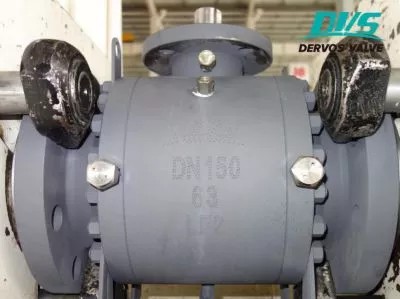Common non-destructive testing methods for forged steel valves
NDT is an abbreviation for Non-destructive testing.
NDT refers to a testing method carried on materials or workpieces that do not impair or affect their future performance or use.
By using NDT, it is possible to find defects in the material or inside and on the workpiece, to measure the geometric features and dimensions of the workpiece, and to determine the internal composition, structure, physical properties and state of the material or workpiece.
NDT can be applied to product design, material selection, manufacturing, finished product inspection, in-service inspection (maintenance) and other aspects, and can make an optimal balance between quality control and cost reduction. NDT also helps ensure the safe operation and/or effective use of the product.
NDT contains a variety of methods that can be effectively applied. The most commonly used NDT methods are: radiographic inspection, ultrasonic inspection, eddy current testing, magnetic particle testing, penetration testing, visual inspection, leak testing, acoustic emission testing, ray inspection, etc.
Since various NDT methods have their scopes of application and limitations, the new NDT method has been continuously developed and applied. In general, any physical, chemical, or other possible technical means may be developed into an NDT method as long as it conforms to the basic definition of NDT.
In China, the term non-destructive testing was also called flaw inspection or non-destructive flaw inspection at the earliest. Other different methods are also called flaw inspection, such as radiographic inspection, ultrasonic flaw inspection, magnetic particle inspection, and penetrant inspection. The term flaw inspection has been widespread and has been used until now, and its usage rate is no less than that of the term non-destructive testing.
In foreign countries, the English word corresponding to the term non-destructive testing, except for the first half of the word, that is, the non-destructive writing method, is mostly the same, and the latter part of the wording is different. For example, in Japan, the word inspection is used. In many European countries, flaw detection was used, while testing is now used uniformly. In addition to the use of testing, in the United States, people seem to prefer to write examination and evaluation. When these words are combined with the first half, the abbreviations are NDI, NDT and NDE. When translated into Chinese, there are different term forms. In fact, these different English and their corresponding Chinese terms have the same meaning. To this end, Non-Destructive Testing Technical Committee of the International Organization for Standardization (ISO/TC 135) has formulated and issued a new international standard (ISO/TS18173:2005), which aims to unify these different forms and styles of writing to clarify that they are terms with the same definition, which is synonymous, that is, equivalent to non-destructive testing. The different ways of writing are simply due to different language habits.
Therefore, as a standardized term, the term "non-destructive testing" is recommended. The names of various non-destructive testing methods are also recommended to use the term "testing" such as radiographic testing, ultrasonic testing, magnetic particle testing, penetration testing, eddy current testing, and the like. At the time of translation, English words such as inspection, examination, and evaluation, which are used in conjunction with Non-destructive, are recommended to be translated into the corresponding Chinese term "non-destructive testing" , instead of writing "non-destructive flaw detection", "non-destructive inspection", "non-destructive examination", "Non-destructive evaluation", etc. This translation method is also suitable for the translation of the names of various non-destructive testing methods.
Note: words such as inspection, examination, evaluation, etc., are only recommended to be translated into the word "testing" when they are used as non-destructive testing and its methods. In other cases, it should be translated according to the original content and Chinese habits.
Commonly used NDT methods and their abbreviations:
Ultrasonic testing ― UT
Magnetic particle testing ―MT
Computed tomographic testing ―CT
Visual testing ― VT
Radiographic testing ―RT
Penetrant testing ― PT
Acoustic emission testing ―AT、AE
Eddy current testing ―ET
Leak testing ―LT
